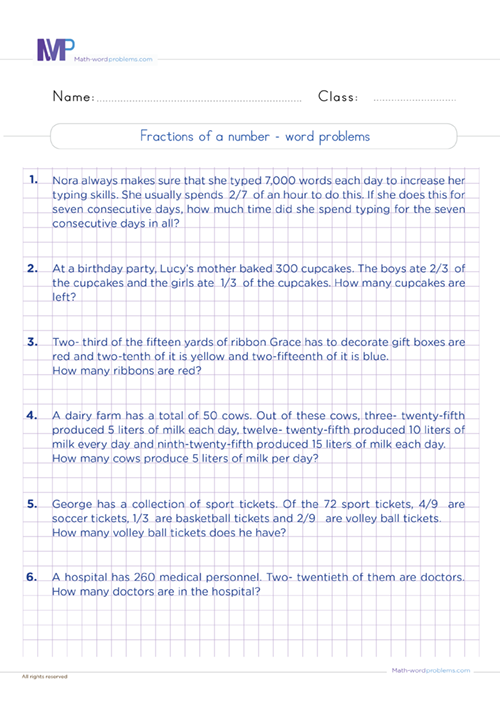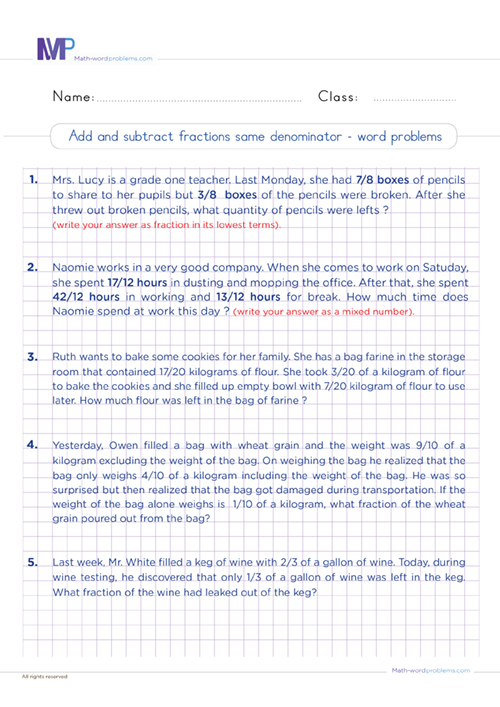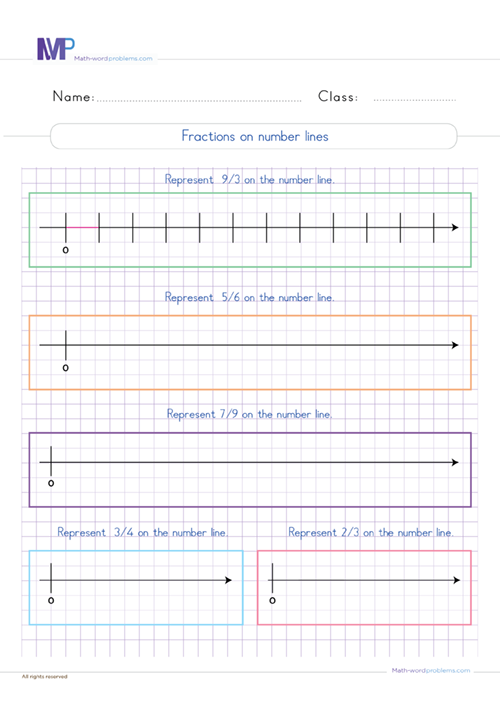 How do you solve fractions of a number word problem?
How do you solve fractions of a number word problem?
Have you been wondering how do you solve fractions of a number word problem? If yes, then we believe this guide will greatly influence you to grasp the best and simple steps for solving all fractions of a number word problems. These steps will include essential points, procedures, and strategies to tackle fractions of a number word problem effortlessly.
It will equally interest you to know that as kids engage in this resource, they will have the solution to any math word problem they come across at their fingertips.
Steps on how to solve fractions of a number word problems
Again and again, when it comes to mastering steps on how to solve fractions of a number word problems, sixth graders always ponder on how they can go about it. Hence, we have come on with this thrilling procedural, well-organized step-by-step guide on how to do it.
We will also incorporate fun and essential math skills and strategies so that kids can enjoy while going through our real-life examples solving process.
Step 1: IDENTIFY
Here, you will need to figure out the important fractions and keywords in the word problem after reading the word problem and understand the problem statement very well. Then, use these keywords to identify the type of operation that the problem calls for.
- Whenever you find yourself with this topic “fraction of a number word problem,” think of multiplication. In addition to this, look for common keywords such as “of,” “times,” “product of,” “how many,” “how much,” etc. in the word problem.
Note: One key Element for learners to understand is that they should not always rely on keywords alone. That is to say; the same keyword can have different meanings in different word problems.
For this reason, we reiterate on the importance of reading the question very carefully to understand the situation that the word problem is describing, then figure out exactly which operation to use
Step 2: STRATEGIZE
Moving forward, ask yourself this pertinent question. “How will I tackle this word problem?”
- As mentioned above, from the keyword(s) in the word problem and from the situation that the problem is describing, you will know if you need to perform a multiplication operation or any other operation.
- However, it would be best not to rely only on keywords. Rather, try to understand the situation that the problem is describing.
- After knowing which operation you will perform, construct short expressions/sentences representing the given word problem.
Step 3: SET UP
Here, you have to write down a numerical expression representing the information in the word problem.
Step 4: PROVIDE A SOLUTION
As you can see from step 3 above, if you are performing a multiplication operation,
- Firstly, you will need to convert the whole number into a fraction by dividing the whole number by 1.
- Then, multiply the numerators across, likewise, the denominators. Note that when multiplying fractions, a common denominator is not needed.
- Also, simplify the fraction if possible.
- Furthermore, do not forget the unit of measurement, if any.
Step 5: CHECK YOUR WORK
Finally, check out your work by interpreting the answer in the context of the problem. If the interpretation makes sense, then “YES,” you are done. If “NO,” go back to step 1 and start all over again.
Examples on how to solve fractions of a number word problems
Example one
Step 1:Frist, the important fraction and whole number here are
Step 2:Next, how will you solve the problem? This problem asks us to find 5 x
Now, form short expressions/sentences to represent the given word problem.
- Fraction of flour that the recipe calls for =
- Number of times he wants to increase the recipe = 5 times
- Therefore, the quantity of flour he needs = the fraction of flour that the recipe calls for × the number of times he wants to increase the recipe.
Step 3:Now, write down a numerical expression to represent the bolded sentence in step 2 above:
→
Step 4:From step 3 above, you will need to:
- Convert the whole number into a fraction by dividing the whole number by 1.
- Then, multiply the numerators across, likewise, the denominators. Note that when multiplying fractions, a common denominator is not needed.
- Also, simplify the fraction if possible.
- Furthermore, do not forget the unit of measurement, if any.
So, he needs
Step 5:Finally, check out your work by interpreting the answer in the context of the problem. If the interpretation makes sense, then “YES,” you are done. If “NO,” go back to step 1 and start all over again.
Example two
Step 1: Frist, after reading and understanding the problem, you see that the important fraction and whole number here are and . Also, the keyword found in the word problem is
Step 2: Next, how will you solve the problem? Looking at the situation that the word problem is describing critically and the keywords found in the problem, it is clear that you need to perform a multiplication operation.
Now, form short expressions/sentences to represent the given word problem.
- Total number of pupils in school = 525
- Fraction of boys in school =
- Therefore, the number of pupils in school that are boys = the fraction of boys in school × the total number of pupils in school.
Step 3: Now, write down a numerical expression to represent the bolded sentence in step 2 above:
→
Step 4: After that, from Step 3 above:
Method 1
Firstly, you will need to convert the whole number into a fraction by dividing the whole number by 1.
- Firstly, you will need to convert the whole number into a fraction by dividing the whole number by 1.
- Then, multiply the numerators across, likewise, the denominators. Note that when multiplying fractions, a common denominator is not needed.
- Also, simplify the fraction if possible.
- Furthermore, do not forget the unit of measurement, if any.
So, there are 210 pupils in the school are boys
Method 2
Here, you can start by simplifying the fractions first before performing multiplication.
So, there are 210 pupils in the school are boys
Step 5: Finally, check out your work by interpreting the answer in the context of the problem. If the interpretation makes sense, then “YES,” you are done. If “NO,” go back to step 1 and start all over again.






